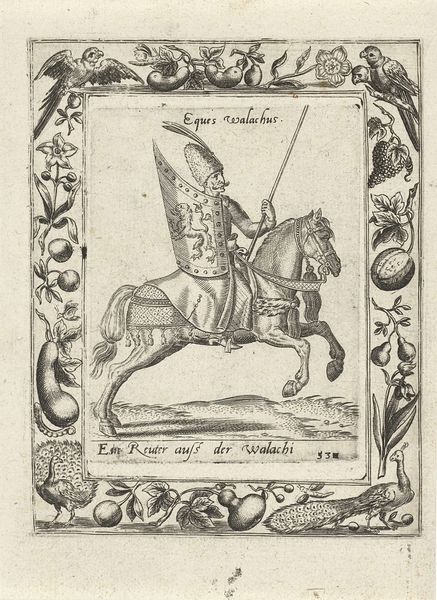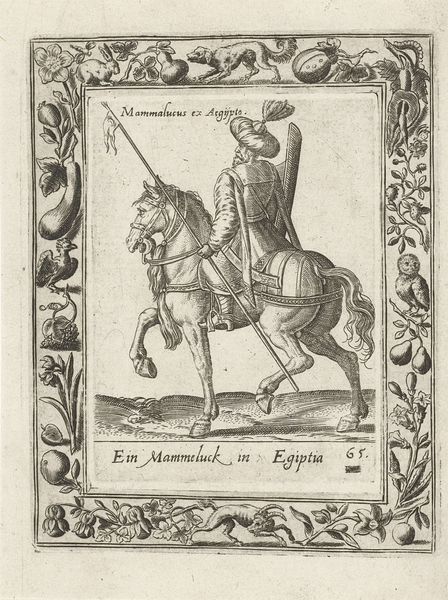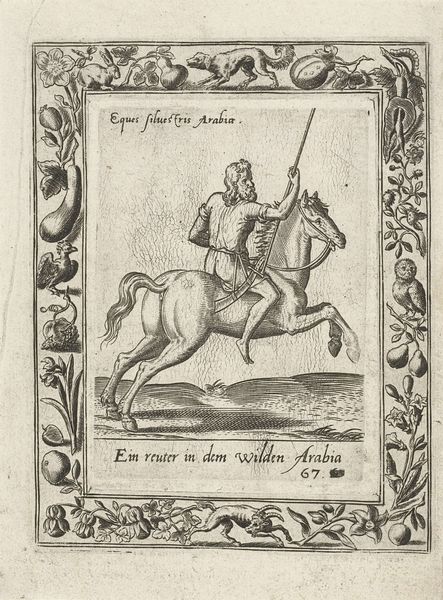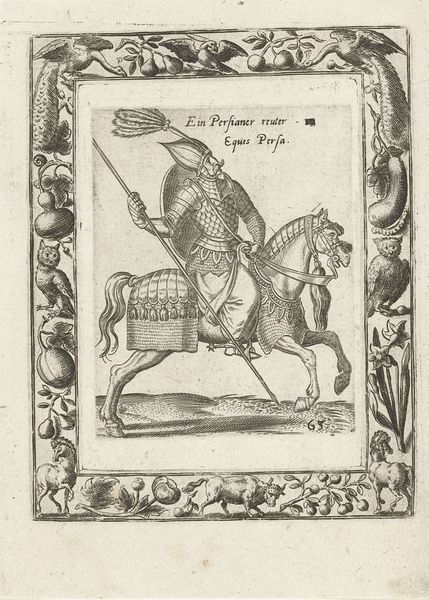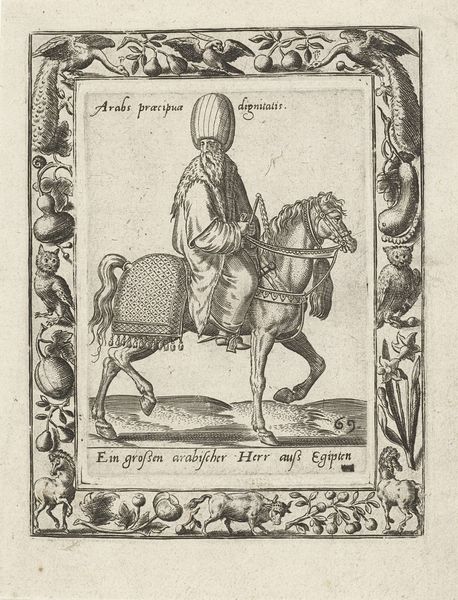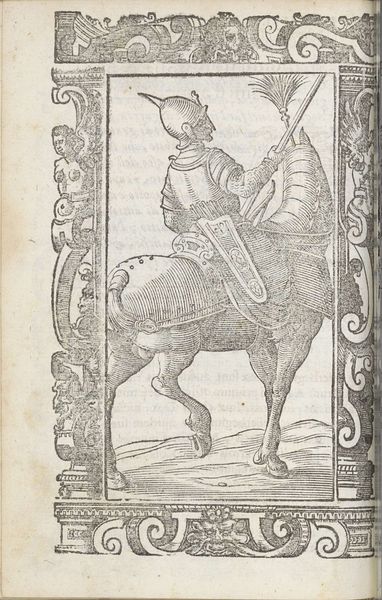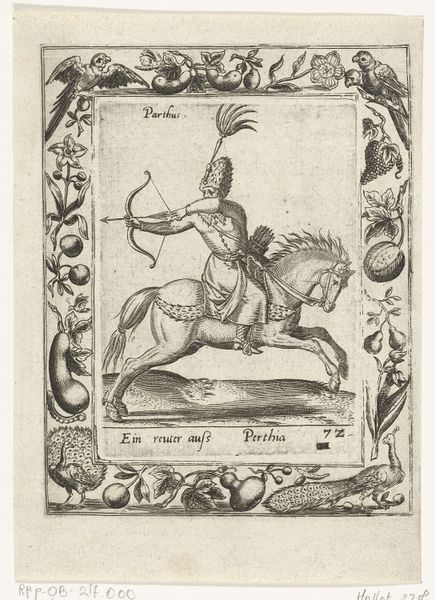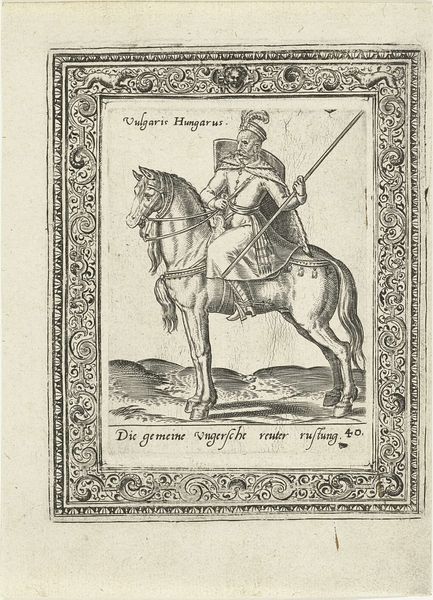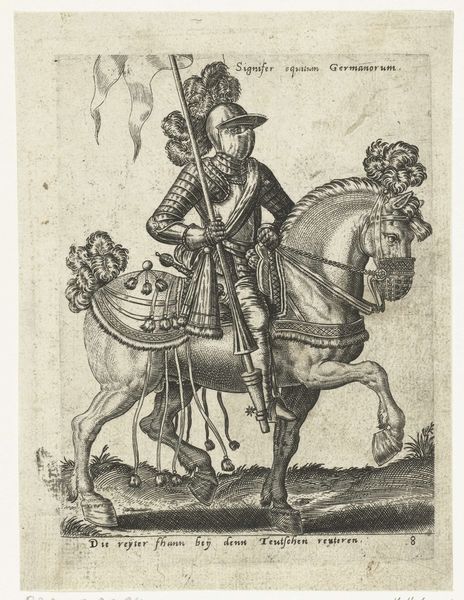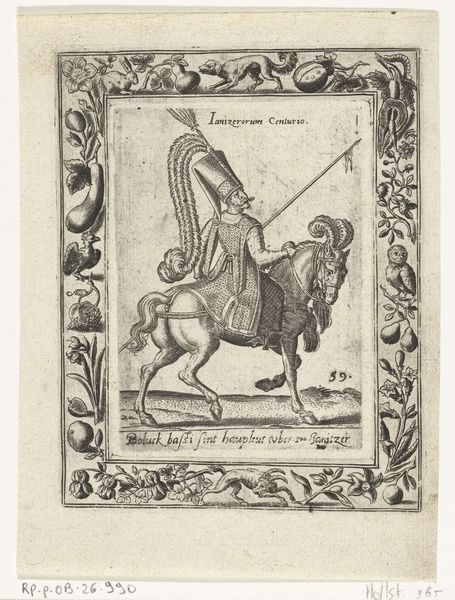
Dimensions: height 104 mm, width 77 mm, height 141 mm, width 111 mm
Copyright: Rijks Museum: Open Domain
Curator: Abraham de Bruyn created this etching and engraving, "Leader of the Janissaries on Horseback", around 1577. It’s currently housed in the Rijksmuseum. The image shows a man on horseback, framed by decorative flora and fauna. Editor: The precision of the line work is striking. It gives the print a distinctly formal air, almost like a meticulously crafted document. Yet the strange border, teeming with animal and vegetable matter, complicates any simple interpretation of power. Curator: Absolutely. The historical context is crucial. The Janissaries were the elite infantry units of the Ottoman Empire, often recruited from conquered Christian territories. The figure's grand attire, especially that large turban, speaks of authority. Consider also the relationship between Europe and the Ottoman Empire, filled with political tension and cultural fascination. How would European viewers receive an image of Ottoman power? Editor: The production itself adds layers. This wasn’t a quick sketch but a multi-step process. First, the image had to be etched, likely in acid, onto a metal plate and then engraved, each line carefully deepened to hold the ink. The level of skill in execution and the choice of a relatively permanent medium elevated the status of the subject while the repetitive process also facilitated wider distribution and thus wider audiences who might, due to limited access to materials, receive these messages about power. Curator: The medium itself influences reception and the message. What’s interesting is the almost anthropological nature of the print. It’s part portrait, part documentation of the "other." De Bruyn seems interested in accurately conveying details of the Janissary leader’s garments and weapons, reinforcing that tension of interest and foreignness. It encourages viewers to construct narratives of cultural encounters through carefully rendered materials. Editor: Yes, I agree, and this very object, now preserved, once served a purpose—disseminating not only visual information, but ideas. Looking at its materiality connects us back to a moment when intercultural exchanges, however fraught with unequal power dynamics, fueled both creation and consumption of imagery like this. Curator: Thinking through the work this way underscores art as a critical instrument of social construction, illustrating dominant cultural assumptions in ways that are available to future audiences. Editor: And seeing that the artist and artisans took the time, had the wherewithal, and dedicated their energies to this reminds us that these depictions were valuable enough to preserve and share at a considerable investment of labor and resources. It forces you to re-think the cost, beyond our contemporary lens of access to these images online.
Comments
No comments
Be the first to comment and join the conversation on the ultimate creative platform.
